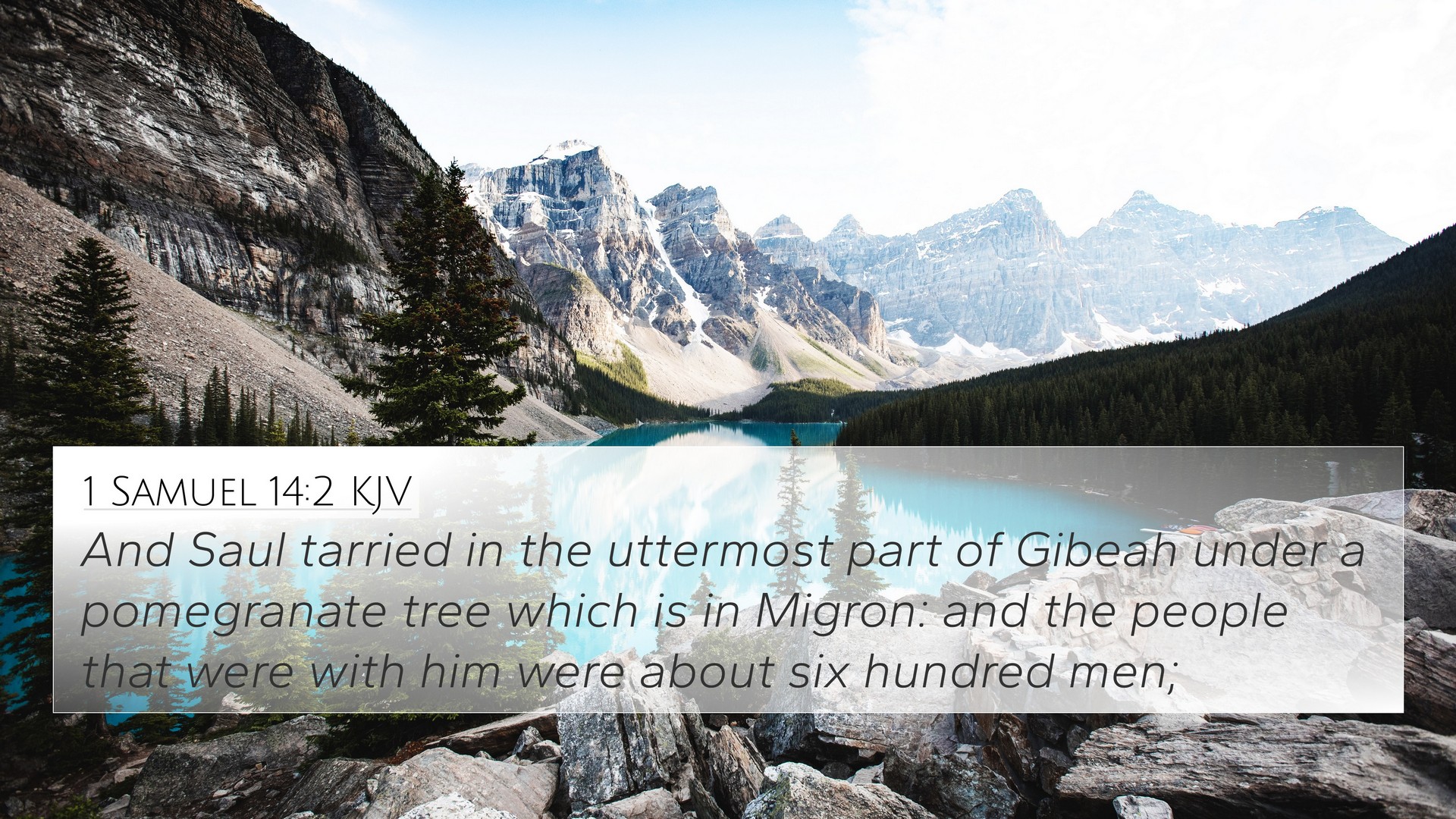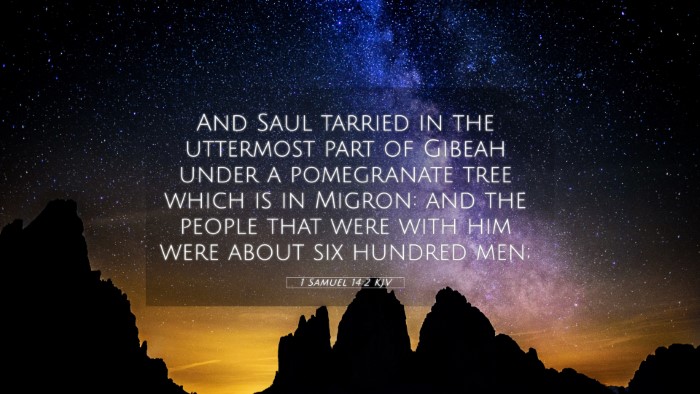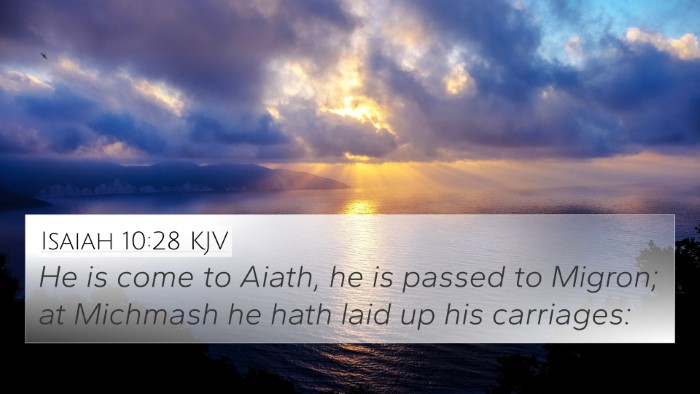Understanding 1 Samuel 14:2
Bible Verse: 1 Samuel 14:2 (ESV) - "Saul was staying in the outskirts of Gibeah in the pomegranate cave at Migron. The people who were with him were about six hundred men."
Overview
This verse sets the scene for a key moment during Saul’s reign over Israel, located in the context of a looming conflict with the Philistines. The imagery of staying in a cave under a pomegranate tree evokes a sense of a retreat or a hiddenness, contrasting with future actions that will show more decisiveness.
Commentary Insights
- Matthew Henry: Henry emphasizes the theme of Saul's hesitance and the state of Israel’s military preparedness. The cave represents a safety but also a cowardice, showing that while Saul had a number of men with him, he lacked the boldness expected of a king in times of war.
- Albert Barnes: Barnes notes the symbolic significance of the "pomegranate cave," suggesting that it could be a place of refreshment or a spot for contemplation, but it also indicates that Saul is not acting on the urgency of the situation. His leadership is under scrutiny since true kingship involves moving forward rather than hiding.
- Adam Clarke: Clarke draws attention to the number of men with Saul and the meaning of "Migron," which means "a precipice." This portrays Saul's precarious situation, standing at the edge of decision-making and the impending battle, illustrating the tension that defines this moment.
Bible Cross-References
This verse can be understood more richly when cross-referenced with other biblical passages that establish thematic connections about leadership, faith, and the nature of conflict:
- 1 Samuel 9:17: God's appointment of Saul as king highlights the starting point of Saul's journey as a leader.
- 1 Samuel 10:21-22: Saul’s initial reluctance in accepting kingship resonates with his hesitance in 1 Samuel 14:2.
- 1 Samuel 13:7-14: The consequences of Saul’s faithlessness in battle show a pattern that leads to his current predicament in 14:2.
- Joshua 7:6-9: A parallel can be drawn with Israel’s defeat at Ai, representing a lack of faith or guidance.
- Judges 6:11-12: Gideon’s call reflects a different kind of leadership strength, contrasting with Saul's current state.
- Isaiah 41:10: An encouragement against fear directly contrasts Saul’s hesitance, inviting consideration of brave leadership.
- Romans 8:31: A reminder of God’s presence can encourage believers today, inspiring boldness that Saul lacked.
Thematic Connections
The themes present in this verse extend into several other areas within the biblical text:
- Leadership and Responsibility: The narrative emphasizes the burden of leadership and its impact on decisions made under pressure.
- Fear and Courage: Saul's location indicates fear—a common human response when faced with opposition. This can be compared to other biblical characters who faced similar crises.
- Warfare and Divine Intervention: The eventual conflict with the Philistines serves as a backdrop for discussions about faith and reliance on God’s power for deliverance.
Cross-Referencing Insights
Using cross-referencing methods to deepen understanding is crucial:
- Employ a Bible concordance to locate thematic connections surrounding faith and leadership.
- Utilize a Bible cross-reference guide to explore parallels between Old Testament leaders and modern applications.
- Explore cross-referenced themes, particularly focusing on how Saul's actions reflect on the characteristics of good leadership.
Final Thoughts
The study of 1 Samuel 14:2 not only highlights a critical moment for Saul but also opens a dialogue about the nature of leadership and faith in God during turbulent times. By engaging in cross-referencing with other Bible texts, one can gain a multifaceted understanding of these powerful themes.




